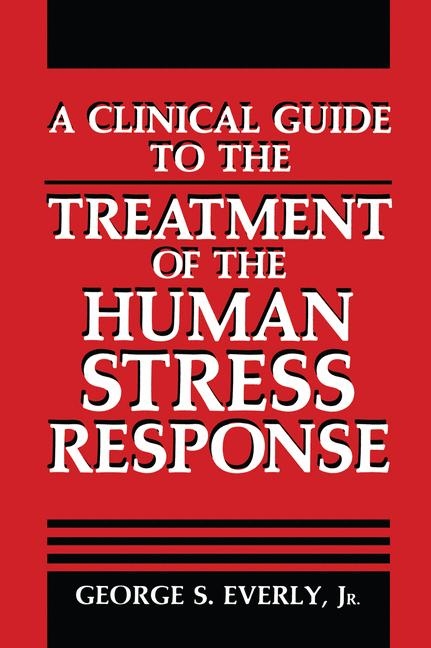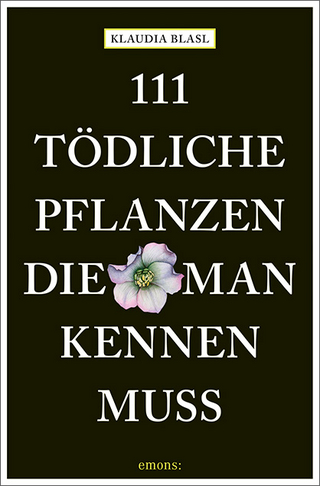
A Clinical Guide to the Treatment of the Human Stress Response
Springer-Verlag New York Inc.
978-1-4612-8059-0 (ISBN)
- Titel ist leider vergriffen;
keine Neuauflage - Artikel merken
Therefore, was made to create a significantly revised the original volume, the decision and expanded volume that would cover many of the same topics as the original volume but would provide a primary emphasis on the treatment of excessive stress and that would employ an integrative phenomenological model to facilitate that end. This present volume entitled A Clinical Guide to the Treatment of the Human Stress Response is the result.
I The Nature of Human Stress.- 1 The Concept of Stress.- Behavior and Health.- Defining Stress.- Stress and Other Concepts.- Plan of the Book.- 2 The Anatomy and Physiology of the Human Stress Response.- Neurological Foundations.- Neural Transmission.- Basic Neuroanatomy.- A Systems Model of the Human Stress Response.- Stressor Events.- Cognitive/Affective Domain.- Neurological Triggering Mechanisms.- The Stress Response.- The Stress Response: A Summary.- Target-Organ Activation.- Coping.- Summary.- 3 The Link from Stress Arousal to Disease.- Selye's General Adaptation Syndrome.- Lachman's Model.- Sternbach's Model.- Kraus and Raab's "Hypokinetic Disease" Model.- Schwartz's "Disregulation" Model.- Everly and Benson's "Disorders of Arousal" Model.- Summary.- 4 Stress-Related Disease: A Review.- Gastrointestinal Disorders.- Gastrointestinal Physiology.- Peptic Ulcers.- Ulcerative Colitis.- Irritable Bowel Syndrome.- Esophageal Reflux.- Cardiovascular Disorders.- Cardiovascular Physiology.- Essential Hypertension.- Vasospastic Phenomena.- Respiratory Disorders.- Allergy.- Bronchial Asthma.- Hyperventilation.- Musculoskeletal Disorders.- Skin Disorders.- The Immune System.- Psychological Manifestations of the Stress Response.- Summary.- 5 The Measurement of the Human Stress Response.- Stressor Scales.- Cognitive/Affective Correlate Scales.- Neurologic Triggering Mechanisms.- Measuring the Physiology of the Stress Response.- Assessment of the Neural Axes.- Assessment of the Neuroendocrine Axis.- Assessment of the Endocrine Axes.- Assessment of Target-Organ Effects.- Physical Diagnosis.- Psychological Diagnosis.- The Assessment of Coping.- Law of Initial Values.- Summary.- II The Treatment of the Human Stress Response.- 6 Personologic Diathesis and Human Stress.- Historical Foundations.- The Principle of Personologic Primacy.- Personologic Psychotherapy and Stress-Related Disorders.- Millon's Personality Theory and Stress Ill.- Summary.- 7 Control and the Human Stress Response.- A Definition of Control.- Theories of Control.- Control and Illness.- Control and Recovery.- Control and Aging.- Control and Psychotherapy.- Summary.- 8 Psychotherapy: A Cognitive Perspective.- Cognitive Primacy.- Cognitive-Based Psychotherapy.- Ellis's Model.- Beck's Cognitive Therapy Model.- Meichenbaum's Stress Inoculation Model.- Summary.- 9 A Neurophysiological Rationale for the Use of the Relaxation Response.- Disorders of Arousal.- Psychiatric Disorders of Arousal.- Somatic Disorders of Arousal.- The Neurologic Foundations of Limbic Hypersensitivity and the Disorders of Arousal.- Ergotropic Tuning.- Neurologic Reverberation and Charging.- Neuromuscular Set-Point Theory.- Models of Neuronal Plasticity.- The Relaxation Response.- The Physiology of the Relaxation Response.- Selecting a Relaxation Technique.- Clinical Precautions and Undesirable Side Effects.- Loss of Reality Contact.- Drug Reactions.- Panic States.- Premature Freeing of Repressed Ideation.- Excessive Trophotropic States.- Summary.- 10 Meditation.- History of Meditation.- Types of Meditation.- Mechanisms of Action.- Therapeutic Hallmarks.- Research on the Clinical Applications and Effects of Meditation.- How to Implement Meditation.- Preparation for Implementation.- Components within Meditation.- Example Protocol.- Summary.- 11 Neuromuscular Relaxation.- History of Neuromuscular Relaxation.- Mechanisms of Action.- Research on Clinical Applications and Effects of Neuromuscular Relaxation.- How to Implement a Physically Active Form of Neuromuscular Relaxation: Preparation.- How to Implement Neuromuscular Relaxation: Procedure.- The Sequential Steps to Follow for Each Muscle Being Relaxed.- Example Protocol.- Summary.- 12 Voluntary Control of Respiration Patterns.- History.- Basic Patterns of Breathing.- Mechanisms of Action.- Clinical Research.- How to Implement.- Summary.- 13 Hypnosis and Stress: Prevention and Treatment Applications.- Historical Background.- Basic Concepts.- Mechanisms of Action.- Self-Hypnosis and Stress Reduction.- Hypnosis and the Modification of Stress-Related Behavior.- Hypnosis and the Modification of Stress-Related Cognitions.- Hypnosis and the Modification of Stress-Related Symptoms.- Treatment Precautions.- Summary.- 14 Biofeedback in the Treatment of the Stress Response.- History.- Biofeedback Modalities.- Electromyographic (EMG) Biofeedback.- Temperature Biofeedback.- Electroencephalographic (EEG) Biofeedback.- Electrodermal (EDR) Biofeedback.- Precautions.- Role of the Therapist and other Factors.- A Final Word of Caution.- Summary.- 15 The Pharmacological Treatment of Excessive Stress.- Sedative-Hypnotics-An Introductory History.- Barbiturates.- Nonbarbiturates.- Antianxiety Agents.- Propanediols.- Benzodiazepines.- Antihistamines.- Beta-Adrenergic Blocking Agents.- Phenothiazines.- Buspirone.- Antidepressants.- Summary.- 16 Physical Exercise and the Human Stress Response.- History of Therapeutic Exercise.- Mechanisms of Action.- Research Supporting Therapeutic Exercise for Stress.- Exercise for Stress Management.- Exercise Guidelines.- Caveats about the Use of Physical Exercise.- Summary.- III Special Topics in the Treatment of the Human Stress Response.- 17 Stress and the Contemporary Woman.- Stressors Unique to Women.- Psychosocial Stressors.- Physical Stressors.- The Stress Response in Females.- Summary.- 18 Occupational Stress and Its Management.- Occupational Stress.- Psychological Factors.- Physical Factors.- Occupational Stress Management.- Guidelines for Program Development.- Components of a Stress Management Program.- Evaluation.- Summary.- 19 Posttraumatic Stress Disorder.- Diagnostic Symptomatology.- Psychological Phenomenology.- Anatomy and Physiology of PTSD.- The Psychological Profile of PTSD.- The Stressor Criterion in PTSD.- Treatment of PTSD.- Psychotherapy.- Pharmacotherapy.- Summary.- 20 Summation and Conclusions.- A Treatment Model.- A Treatment Protocol.- A Word about Treatment Adherence.- Summary.- Appendixes Special Considerations in Clinical Practice.- Appendix A Self Report Relaxation Training Form.- Appendix B Physically Passive Neuromuscular Relaxation.- Appendix C Stress-Inducing Sympathomimetic Chemicals.- Appendix D Vascular Headaches and Vasoactive Substances.- Appendix E The Etiology of Panic: Nonpsychological Factors.- Appendix F Biochemical Bases of Arousa.- Appendix G Professional Journals for Stress Research.- Appendix H How Do You Cope with Stress? A Self-Report Checklist Designed for Health Education Purposes.- References.- About the Author.
| Reihe/Serie | Springer Series on Stress and Coping |
|---|---|
| Zusatzinfo | biography |
| Verlagsort | New York, NY |
| Sprache | englisch |
| Maße | 152 x 229 mm |
| Gewicht | 601 g |
| Themenwelt | Sachbuch/Ratgeber ► Natur / Technik ► Garten |
| Geisteswissenschaften ► Psychologie ► Klinische Psychologie | |
| Geisteswissenschaften ► Psychologie ► Persönlichkeitsstörungen | |
| Medizin / Pharmazie ► Gesundheitsfachberufe | |
| Medizin / Pharmazie ► Medizinische Fachgebiete ► Psychiatrie / Psychotherapie | |
| ISBN-10 | 1-4612-8059-1 / 1461280591 |
| ISBN-13 | 978-1-4612-8059-0 / 9781461280590 |
| Zustand | Neuware |
| Informationen gemäß Produktsicherheitsverordnung (GPSR) | |
| Haben Sie eine Frage zum Produkt? |
aus dem Bereich


